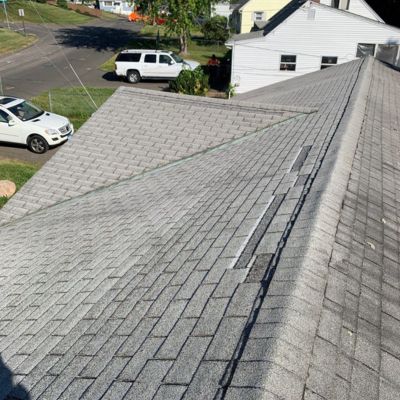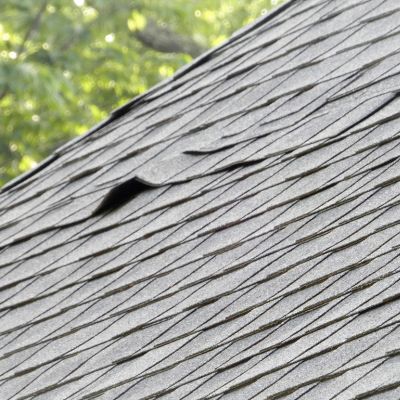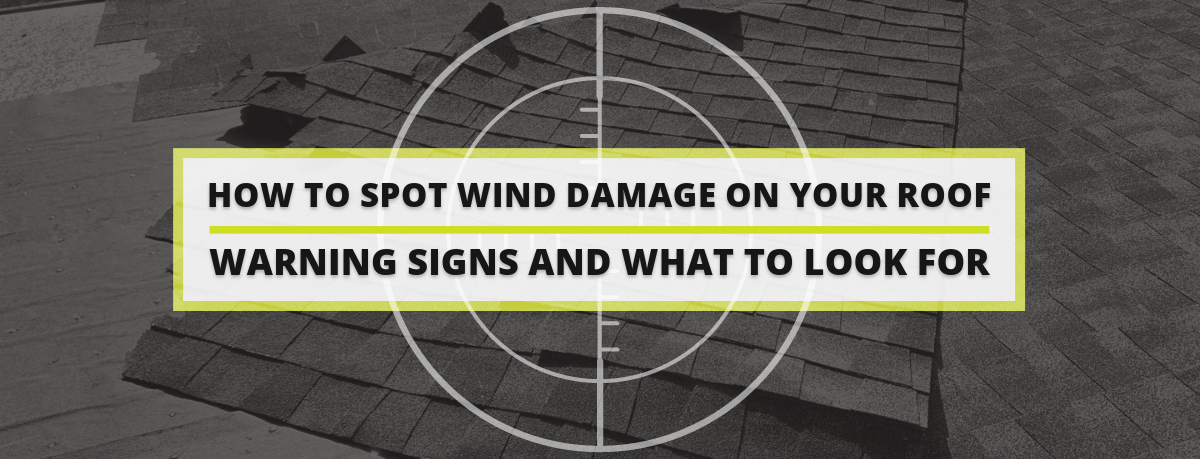Your roof is an important part of protecting your home against the elements, including the strong forces of wind. Wind can cause significant damage to your roof. That damage can compromise your roof’s structural integrity and put your entire home at risk. It’s crucial to be able to spot wind damage early on to prevent costly repairs or potential hazards. At Rhino-Back Roofing we have a team of experts who are trained to identify wind damage.

How Does Wind Affect Shingle Roofs?
The severity of wind damage to shingle roofs can vary based on several factors, such as the strength and duration of the wind event, the quality of the shingles, and the roof’s condition.
A roof that is not installed correctly or is aging can be more susceptible to wind damage. Even a roof that is only a couple years old can experience wind damage depending on how strong of a storm hit the area. Addressing any signs of wind damage as soon as possible is essential to prevent further damage to the roof and the interior of the home.
Warning Signs of Wind Damage
Wind damage isn’t always easy to spot and can go unnoticed to the untrained eye. A professional inspection should be done to confirm any damage to your roof. Some signs of wind damage you could look for are:
- Missing shingles: One of the most common signs of wind damage is the presence of missing shingles. Strong winds can blow shingles off your roof, exposing it to further damage from rain and sunlight. Look for noticeable gaps or patches where shingles are visibly missing.
- Lifted or curled shingles: Winds can lift the edges of your shingles, causing them to bend or buckle. These lifted shingles can create entry points for moisture, especially if it is accompanied by driving wind. This can lead to leaks and water damage inside your home.
- Loose or displaced flashing: Flashing is the material used to seal joints and prevent water intrusion around areas like chimneys, vents, or skylights. High winds can loosen or displace the flashing, compromising its effectiveness.

It’s always important to have a professional inspect your roof to determine if you have wind damage. Some of the signs for wind damage could actually be due to other causes such as old age or improper installation. At Rhino-Back roofing our team of experts can help you determine exactly what is going on with your roof.
Considerations:
While it’s essential to know the warning signs of wind damage, knowing why and how to inspect is equally important. Here are a few key points to keep in mind:
- Safety first: Check your roof from the ground. You can also climb a ladder to check your roof’s edge, gutters, fascia & soffit, but only if it is safe for you to do so. If you’re not comfortable or don’t have the experience, it’s best to hire a professional roofing contractor who can conduct an inspection for you.
- Use binoculars: Some signs of wind damage may be visible from the ground. Use binoculars to closely examine your roof’s condition, paying close attention to the warning signs mentioned earlier.
- Contact a professional roofer: If you suspect wind damage or aren’t confident in your ability to assess your roof’s condition, it’s advisable to contact a professional roofer. They will have the expertise and experience to identify any damage accurately and provide you with the best action.
Next Steps
By being aware of the warning signs and knowing what to look for during cursory inspections, you can address any issues promptly and minimize the potential for costly repairs. Remember, when in doubt, always consult a professional roofer to ensure your roof remains in optimal condition for years to come.
If you suspect that your roof has sustained wind damage and you need the services of a professional roofing contractor, please get in touch with Rhino-Back Roofing. We are experts in insurance restoration roof work. After working with us, you will again have confidence in the protective stability & beauty of your roof.

